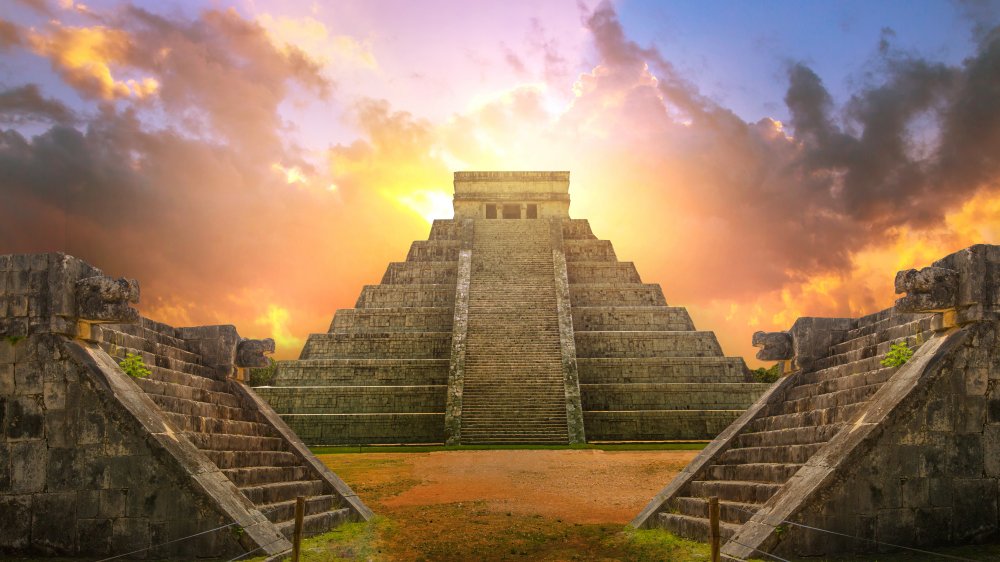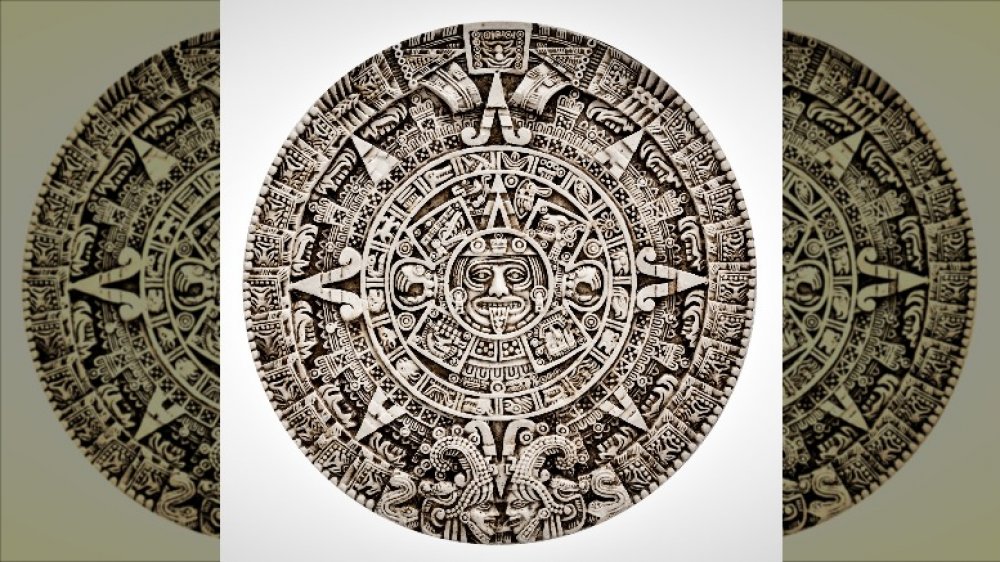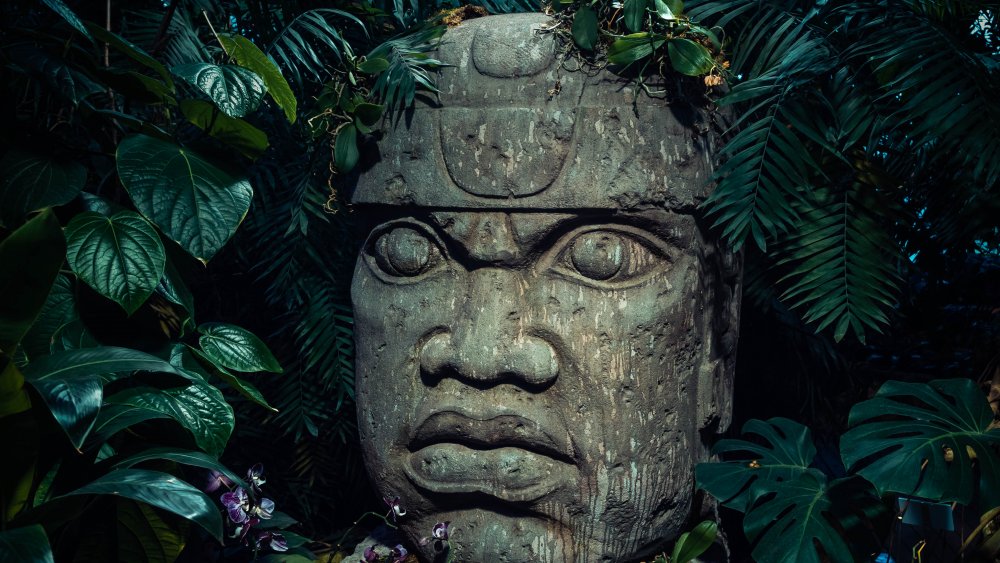The Real Reason The Mayan Civilization Was Destroyed
Centered in the heart of present-day Guatemala, the Mayan Empire flourished for close to two and a half millennia, only to abruptly disappear around 900 CE. According to History.com, at its zenith, the Mayan culture was a brutal, yet rich and complex place to live, filled with enormous monuments, well-organized city life, a civic administrative system, and a complex network of trade. With the added luxury civilization bonus features of a suitably hell-fixated religious system and a sophisticated understanding of mathematics and astronomy, you'd think the Mayan people had secured their future as a cohesive culture capable of rolling with history's punches.
But sprawling Mayan cities that encompassed over 20 million people in 700 CE had become abandoned ruins by 900 CE. In less than two hundred years — half a blink of a historian's eye — enormous urban centers were abandoned ruins. Nothing was left. The destruction was so absolute that the goofier of historical pundits have posited a range of entertaining theories, from alien invasion to Gaia Magazine's interesting notion that the civilization's tragic fate might be chalked up to the handiwork of an ancient deity hell-bent on mercury fuel for its super-powerful god-technology. But scientists are offering a more plausible, albeit depressing, theory for why the Mayan civilization disappeared so swiftly.
A victim of its own success
The most likely reason is just an unusually rapid version of how so many of history's civilizations have fallen: through becoming a victim of their own success. The Mayan Empire was huge. A population of 20 million hungry people is a big number for a civilization to sustain now. Over a millennia ago, the burden of that many mouths to feed likely posed an enormous challenge — and one that had to be tackled without the benefit of advanced agriculture practice.
Vast tracts of forests were felled and cleared to make room for agriculture, gradually expanding the areas of deforestation around Mayan urban centers. But felling trees for agricultural land was only part of the picture. According to research cited in Smithsonian, yet more land was cleared to fuel fires for making lime plaster, a key ingredient for the Empire's distinctive monuments and architecture. The research estimates that, at the height of its cultural expansion, 20 trees would need to be felled to adorn just a few square feet of urban Mayan landscape.
The Mayan tipping point
Groaning under the combined pressures of keeping its people fed and maintaining the cultural grandeur to which it had become accustomed, the Mayan civilization likely hit an ecological tipping point at some point between 700 and 900 CE. Cleared land meant less solar radiation, and in turn, less water evaporating from its surface. Rains became unreliable. Crops began to fail. Systemic and prolonged drought scarred the landscape and further drained the soil. And one by one, most Mayan cities could no longer sustain life.
As Live Science reports, there were exceptions. Some Mayan cities like Chichén Itzá continued to flourish. But when the Spanish arrived in Central America in the 16th Century, the Mayan were already a politically and culturally fractured group of people.
So, while the fun money may well be on the idea that mercury god-fuel brought the Mayan Empire to its knees, the good money is on the vastly more depressing theory that the Mayans broke their own empire — with a culture and population size that demanded ever more aggressive, and ecologically disastrous, deforestation. Ugh.


